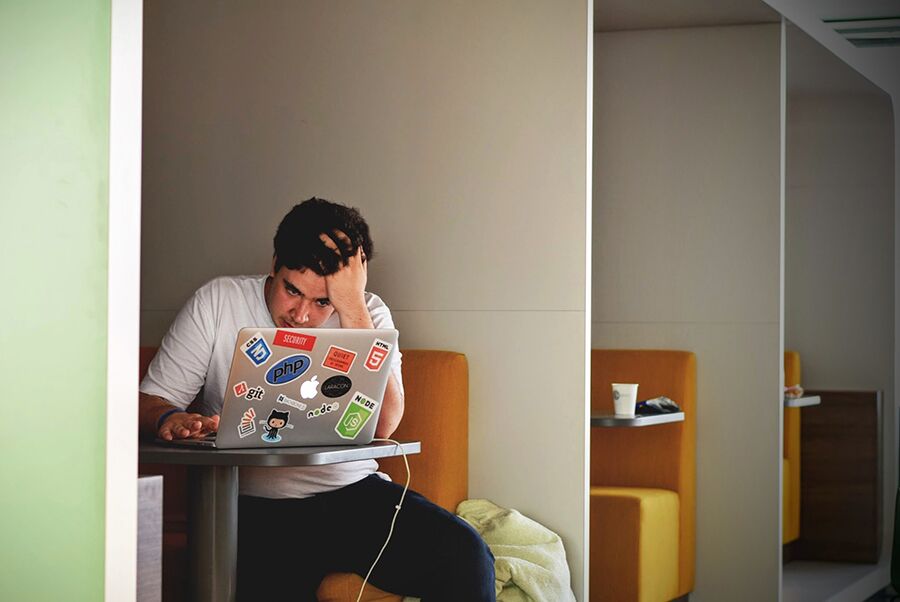You may not think of your posture as one of the most important aspects of your work life, but it’s becoming an increasing priority in a lot of offices as people realise the colossal effects it can have upon your health and your productivity.
The fact is, the average adult spends around 50-70% of the day sitting at work. Clearly, something that accounts for such a huge chunk of your life needs to be done properly, ensuring you reduce the risk of negative impacts as far as possible. You have to reconcile the incompatibilities between the work and the worker in order to allow the best possible and safest performance.
The risks
The potential negative impacts of sitting poorly are very real, and very serious. Office workers who spend most of the working day sitting at their desks have been found to be twice as likely to have cardiovascular disease, and a massive 54% more likely to die of a heart attack – even if they dedicate a lot of time and effort to keeping in shape.
After all, it makes sense that 1 hour of activity a day can’t cancel out 11 hours straight of sitting still. And it’s not just cardiovascular issues we’re talking about; spending extended periods of time sitting has been linked with obesity and diabetes due to the negative effect on blood sugar and blood fat levels, as well as a variety of cancers that can lead to early death.
As well as weight gain (the average gain being 16 pounds within 8 months of starting a desk job), weakened muscles are also a problem for a lot of office workers, as none of the most important muscle groups are being used as they should be. If you’re going to be healthy and able to support yourself, your muscles should be active every day.
These are just the most common risks associated with long periods of sitting. Research into the long term effects is still ongoing, and organisations such as the NHS continue to provide great information on the potential problems, and the best ways to avoid them.
Setting up your work station
How you arrange your desk is a key place to start adjusting your posture. Your monitor should be at arms’ length from you, and at eye level (this applies whether you choose to stand or sit, as either way it prevents neck strain). If you sit back and stretch out your arm, the tips of your middle finger should hit your screen. Avoid placing the monitor across from lights or windows, as this can cause glare.
Your keyboard and your mouse should also be directly in front of you, easy to reach, and close together to avoid body twists. In order to centre your keyboard, you should generally aim for the letter ‘B’ to be straight in front of you. Both the keyboard and mouse should be at the right level for your elbow to bend at more or less a right angle to reach them. Try to keep your wrists straight to reduce pressure and make you less likely to get carpal tunnel syndrome. It might even be worth trying to teach yourself to use the mouse with both hands, so that the effort is distributed.
These are just the first steps you can take in ensuring that your workstation is perfectly setup. There are many more small changes you can make, as this article dedicated to ergonomic desk setup shows.
Standup desks
One option that more people are beginning to opt for is a standing up desk rather than a typical sitting one. This is thought to fight disease and come with a host of health benefits. Firstly, it burns more calories. You’re suddenly able to pace, dance, fidget, foot-tap and so on, as humans naturally do. This extra movement not only burns calories, but also allows the blood to circulate better. In fact, standing at work instead of sitting can burn 280 extra calories every single day, amounting to a significant 2,000 calories in a week – over a year, that amount of calories equates to a loss of 20 pounds in a year.
Standing also naturally improves your posture and strengthens muscles, allowing your body its natural movement and taking the pressure off your joints and your spine. The benefits, as well as best practices, of standing desks have been well documented. A great example is this e-book on standing desks by specialist company, Updesk.
The sluggish, tired feeling created by sitting all day will suddenly disappear, meaning you feel more energised and productive throughout the day, with the increased blood flow making people vibrant and alert. Similarly, the increased blood flow is crucial for good digestion, so you will find you have much more energy after meals.
How to sit better
When considering how best to sit there are some things you should always try to avoid. One of the first, and most obvious, is crossing your legs, which can cut off circulation.
Simply forcing yourself to sit up straight is also not a good solution, as keeping your spine in an artificial, uncomfortable, rigid upright position simply places even more stress on your vertebrae. But don’t be tempted to lean backwards or forwards instead, as this can be bad for your nerves and restrict blood flow.
For optimum posture, your back should be supported, your hips pushed back in the chair, and your feet resting comfortably on the floor.
You should change your posture slightly as regularly as you can, to promote blood flow and reduce feelings of fatigue. A good way to do this is to change it up depending on what you’re doing: while you’re using the keyboard and mouse, your chair should be upright, and while you’re on the phone you can recline to open up the angle of your hips.
Rocking backwards and forwards can also be really beneficial. Although minuscule, you are actually performing a sort of balancing act – which has even been proven to boost your concentration!
If your work day consists of sitting at a desk, you should interrupt your sitting at least once in every half an hour. It’s been found that walking for five minutes every hour can be just as effective as standing all day, so if the thought of a standup desk is a little daunting for you, there are equal alternatives.
There is also the development of active sitting solutions that enable the body to be more mobile while still remaining seated at a desk. If you choose this beneficial alternative, you will find your core strength is improved and the amount of calories you burn every day will be increased, leading to weight loss. There are lots of different products to encourage active sitting, from special ball shaped chairs to under the desk exercise cycles.
Don’t forget to Communicate
Improving your desk posture is important, but so is improving your communication with others. WHYPAY? allows you to make completely free conference calls, as long as you have bundled minutes on your telephone contract. Give it a try now…
Generate your 1st FREE Conference »
We don’t require an email address or any other information.
Just click the button and you’re ready to go!




